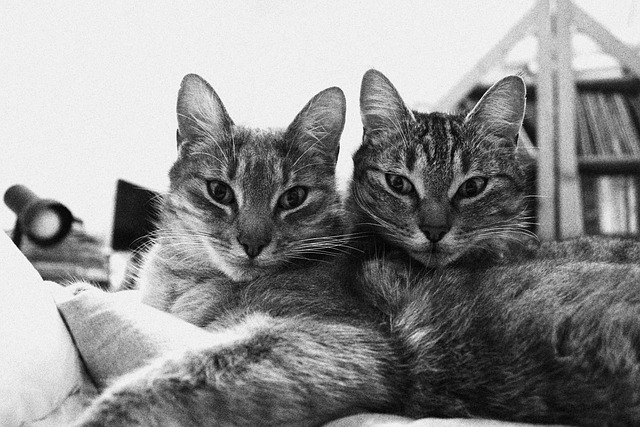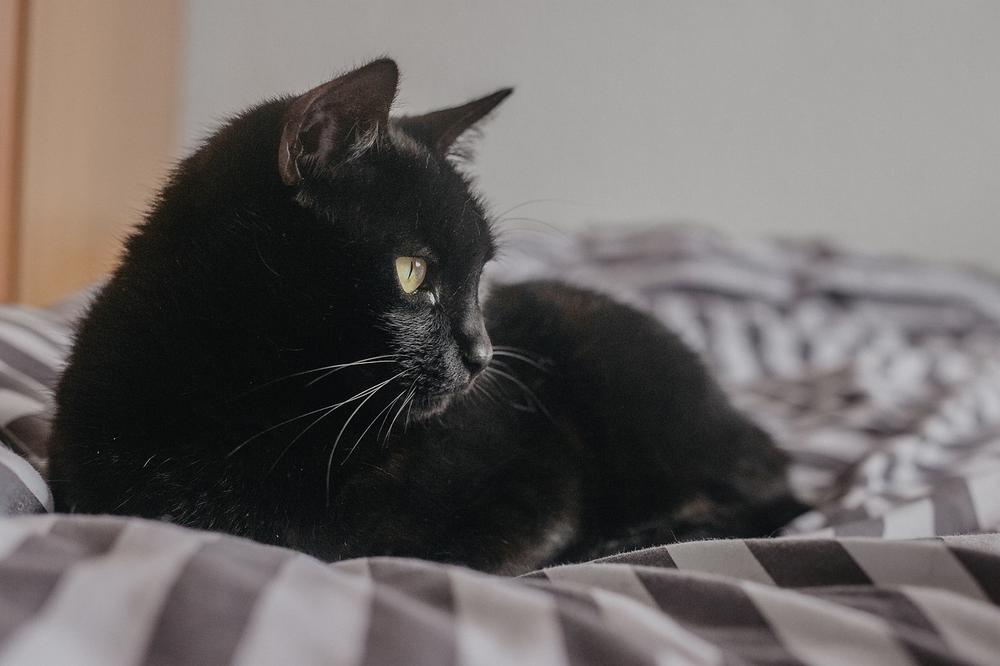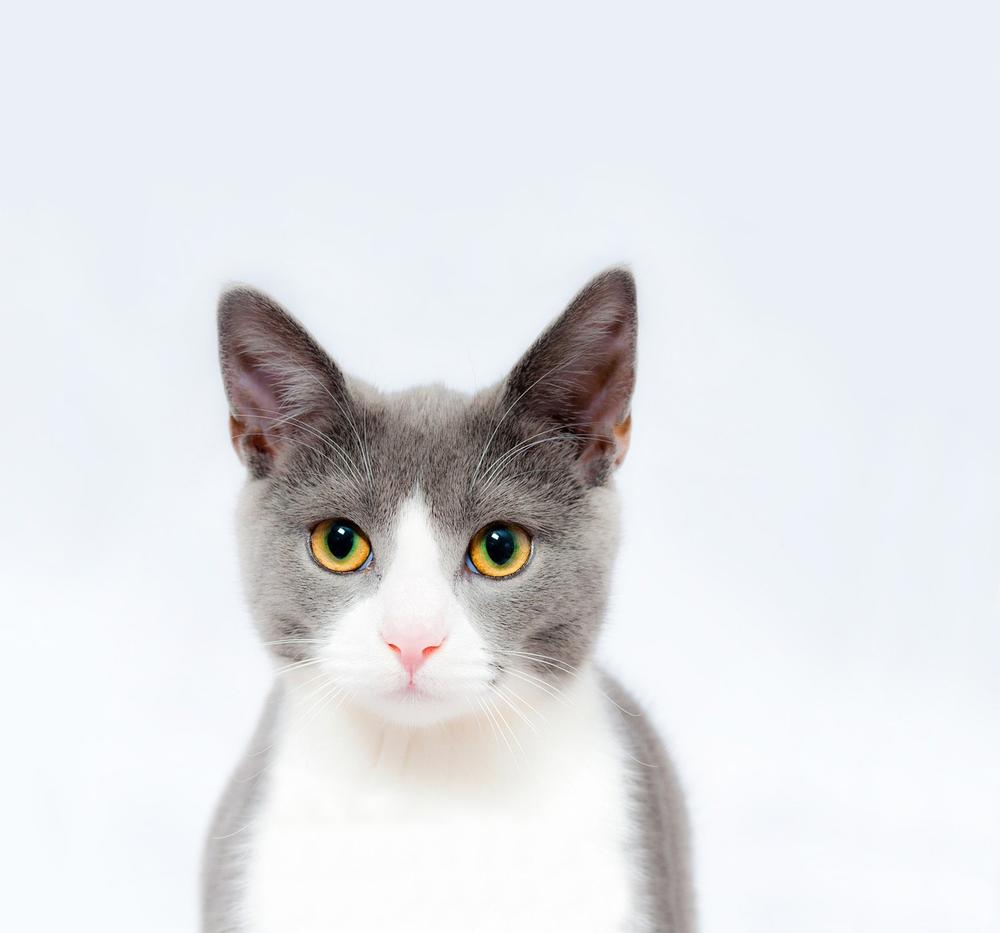Can Cats Have Twins?

Ever wondered if cats can have twins?
Curiosity piqued, eyes locked on the screen, you're dying to know the truth, right? 😮
But hold up, let's not jump the gun.
Shall we unravel this mystery together?
Let's begin.
Can Cats Naturally Have Twins Frequently?
While cats can have twins, it is not common for them to do so frequently. Twin births in cats are rare, making them the exception rather than the rule. Cats tend to prefer having single births, making twin litters a surprise occurrence.
Cats can indeed have twins, but it is relatively rare.
In fact, cats have a slightly higher chance of twins compared to humans, but it's not like every cat out there is popping out twins left and right.
That would be quite the spectacle, wouldn't it?
While not all littermates in a cat's litter are twins, it is possible for some of them to be.
It’s like a little surprise package when you open that kitten-filled box.

You see, single births are less common in cats compared to humans. Most cats prefer to go big or go home, if you catch my drift.
However, twin births in cats are still quite uncommon, so it’s not something you’re likely to witness on a regular basis.
One at a time seems to be their preference.
So, while twins in cats do occur, they are the exceptions rather than the rule.
Hope this helps satisfy your curiosity about cats and twins!
Meow!
Main points I'll expand upon further down this article:
- Factors such as multiple fathers and strain on the mother can influence litter size.
- Cats typically have litters of four kittens on average.
- Smaller kittens may face delivery difficulties in larger litters.
- Female cats can get pregnant year-round, with spring being peak kitten season.
- Younger cats tend to have smaller litters, while first-time mothers are more likely to have twins.
- Litter size may decrease as the queen gets older, with larger litters in summer.
- Some cat breeds are known for larger litters or twin-sized litters.
- Identical twins are extremely rare in cats, while non-identical twins have unique genetic combinations.
- Identical twins must be the same sex.
- Identifying genetic similarity in kittens can be challenging, but direct observation at birth or DNA testing is the most reliable method.
And now that you know twins in cats are rare, let's explore the factors that influence cat litter size...
Factors Influencing Cat Litter Size
When it comes to how many kittens a cat can have, there are a bunch of things that come into play.
Let me break them down for you:
- Twins and multiple fathers: You know, cats can get pregnant from more than one male, so sometimes they end up with kittens from different dads.
- Average litter size: Usually, cats have around four kittens in one litter, but some cats can have even more!
- Challenges during delivery: Having a big litter can be tough on the mama cat, especially if some of the kittens are smaller. It can make giving birth hard and cause problems with feeding.
- Seasonal variation: Female cats can get knocked up any time of the year, but springtime is when there's the most baby cat action. New moms who aren't experienced tend to have smaller litters, while first-time queens are more likely to have twins.
- Age-related changes: As cats get older, they might start having fewer kittens in their litters. But interestingly, bigger litters are more common in the summertime.
- Breed influences: Some types of cats, like Siamese, Burmese, and Orientals, are known for popping out lots of kittens. But really, any breed, from fancy-pants purebreds to alley cats, can have litters with twins or more.
So, as you can see, there are a bunch of things that come into play when it comes to how many kittens a cat has.
But here's something you might not know...
While twin kittens are not uncommon, genetically identical twins in cats are extremely rare. Let me dive deeper into this fascinating topic and unravel the mystery behind identical twins in our feline friends.
You might be surprised by what I discovered!
The Genetics of Cat Twinning
While rare, genetically identical twins in cats do exist. These twins result from a fertilized egg splitting into two embryos, creating identical twins with the same DNA. However, variations can occur due to one X chromosome taking a break. Opposite-sex twins are not possible in cats.
The Genetics of Cat Twinning
Curious if cats can have twins?
Well, let me give it to you straight:
Genetically identical twins are extremely rare for cats.
Here's the lowdown on how it all works.
When a fertilized egg splits into two embryos, it creates identical twins.
These twins have the same DNA and go by the fancy names monozygotic or identical twins.
Now, don't mix them up with non-identical twins, which happen when different eggs and sperm get together.
Genetically identical twins have their own unique genetic combos that set them apart.
But here's something interesting for you to chew on:
Female cats have two X chromosomes.
Sometimes, one of these pretty chromosomes decides to take a break, causing variations among identical twins.
Just keep in mind, though, that identical twins gotta be the same gender.
So, sit down for this news flash:
Opposite-sex twins are a no-no for cats.

Sorry, but it's just not happening. 😺
While twin kittens are a possibility, genetically identical twins aren't exactly popping out like spring flowers. In most cases, each cat romance session produces just one fluffy cutie-pie.
If you ever see two cats that look like long-lost twins, chances are they had the same dad.
So, that explains it!
Now, let's talk about Siamese markings. Even if only one parent is a Siamese beauty, those distinct markings can still show up in the kittens.
Isn't genetics fascinating?
But here's the thing:
There isn't much solid evidence on the existence of genetically identical twin cats.
Our understanding mostly comes from studying other animals.
Funny enough, the first identical twin dogs were born in South Africa.
Go figure!
So, while twin cats do make an appearance, spotting truly identical twins is like finding a unicorn on roller skates—a rare sight indeed.
But hey, cats never fail to surprise us, so who knows what cute little mysteries are waiting for us in their world?
Now, here's the deal...
Understanding the differences between fraternal and identical twins is crucial in unraveling the mystery of cat twinning.
But what if I told you that the way these twins develop can also impact their coat color and markings?
Get ready to dive into the captivating world of feline genetics and unravel this fascinating phenomenon...
| Question | Answer |
|---|---|
| Can twin kittens share a placenta? | Yes, twin kittens can share a placenta. |
| How can you determine if the kittens are identical twins? | Identical twins share a placenta. |
| How can you determine if the kittens are fraternal twins? | Fraternal twins have separate placentas. |
| Do identical twin kittens look exactly the same? | Identical twin kittens may have subtle differences in fur color, patterns, or facial features. |
| Can fraternal twin kittens have different fathers? | Yes, fraternal twin kittens can have different fathers. |
| Are kittens from the same litter always twins? | No, a litter can consist of both single kittens and multiple kittens. |
| Are twin kittens more common in certain cat breeds? | Twin kittens can occur in all cat breeds. |
| Is it possible for a cat to have multiple litters of twins? | Yes, a cat can have multiple litters of twin kittens. |
| Can twin kittens have different genders? | Yes, twin kittens can have different genders. |
| Are twin kittens more prone to health issues? | Twin kittens are not necessarily more prone to health issues. |
Are you curious about whether cats can have twins?
Well, let me tell you something fascinating about twin kittens and their placentas.
When it comes to twins, there are actually two types:
Fraternal and identical. And guess what?
These two types have different placental arrangements!
With fraternal twins, each kitten comes from a separate egg, which means they also have their own placenta.
On the other hand, identical twins originate from a single fertilized egg that splits into two, leading them to share a placenta. Isn't that pretty amazing?
But here's where it gets even more interesting.
Even though identical twins share the same placenta and amniotic sac, their coat colors and markings can still differ. This is all because of gene expression, my friend. And if you think we're done with surprises, just wait...
Fraternal twins have separate membranes. So when it's time for birth, the fact that both cats share the same placenta serves as undeniable evidence of their identical twinning.
Can you believe it? 😮
But wait, there's one more fascinating topic I want to share with you.
If you're curious about whether or not ragdoll cats can be black, I encourage you to delve into my comprehensive guide, a must-read for anyone intrigued by the question.
Explore the answer in depth by checking out Can Ragdoll Cats Be Black and satisfy your curiosity.
Determining if Kittens Are Twins

Determining if kittens are twins isn't easy, but I've got some tips to help you out:
- Just by looking at them, you can't tell for sure if kittens are genetically identical twins. Their coat colors and markings can vary, making it hard to distinguish.
- Breeders sometimes use colored collars or marked nails to tell littermates apart, but even twin cats can have this rare thing called heterochromia iridium, where each eye has a different color.
- Relying solely on appearance doesn't give you a clear answer about genetic similarity. However, if you look at their anogenital distance shortly after birth, you might be able to figure out their sex, and that could offer some clues about their genetic relationship.
- If you want a definite answer, the best way to confirm if kittens are identical twins is to witness their birth or do a genetic test like DNA testing. That's the most reliable method.
- Keep in mind that gene expression can throw a curveball, and DNA tests can cost you a pretty penny. So in scientific research, determining for sure if two cats are really identical twins can be quite a challenge.
So appearance might give you a hint, but ultimately, if you want to know if those kittens are twins, you'll need to turn to more advanced methods like genetic testing.
And that wraps up today's article.
If you wish to read more of my useful articles, I recommend you check out some of these: Do Cats Have Kittens in Winter, How Many Kittens Can a Cat Have, Will Male Cats Mate With Females Not in Heat, How to Tell if Cat Mating Was Successful, and When Do Cats Reach Full Size
Talk soon,
-Sarah Davis